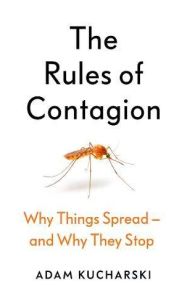Зарегистрируйтесь на getAbstract, чтобы получить доступ к этому краткому изложению.

Зарегистрируйтесь на getAbstract, чтобы получить доступ к этому краткому изложению.
Adam Kucharski
The Rules of Contagion
Why Things Spread – and Why They Stop
Profile Books, 2020
Что внутри?
It’s hard to predict how fast and far an outbreak will spread because each outbreak is unique.
Recommendation
Despite the title, there are no real rules of contagion other than a basic pattern of growing, stabilizing and then declining. In this book, epidemiology professor and mathematician Adam Kucharski examines different types of outbreaks. Beyond infectious disease epidemics, other types of outbreaks include financial crises, viral online content, and the spreading of ideas and social behaviors such as obesity, yawning and even gun violence. Kucharski discusses traditional viral outbreaks such as Ebola and Zika, and the spread of malaria. But the more interesting chapters discuss how ideas and behaviors mushroom, from scientists who quote each other’s work in academic journals to friends influencing friends. This book was published before the COVID-19 pandemic hit but it’s appropriate reading during a quarantine.
Summary
About the Author
Adam Kucharski is a mathematician who has worked on global outbreaks including the Ebola epidemic and Zika virus. Kucharski is also an associate professor at the London School of Hygiene & Tropical Medicine.


















Comment on this summary